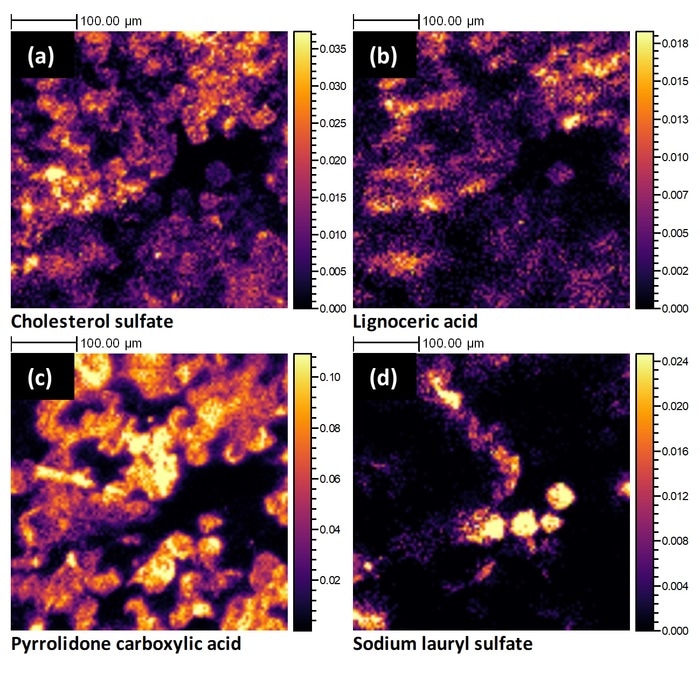Scientists have precisely studied the skin’s resistant barrier layer, producing the most thorough molecular map of its form to aid in the creation of novel skin products and treatments.

Images of the skin surface chemistry from study. Image Credit: University of Nottingham
Researchers from the University of Nottingham analyzed human skin tissue from the stratum corneum using the most advanced three-dimensional mass spectrometry imaging technology to show its molecular chemistry in extraordinary detail.
These discoveries contribute to a better knowledge of skin biology at a fundamental level, paving the way for the creation of innovative skin products and treatments. The results of this study were published on 14th March in the journal PNAS.
The 3D OrbiSIMS device used in this study was the first in the world to be owned and operated by the University of Nottingham. The process enables unprecedented molecular investigation of a wide variety of materials, including biological tissues like human skin.
Significantly, because of its high mass resolving capacity, chemical specificity, and sensitivity, it can be utilized to examine in situ human skin samples and trace the molecular structure of the skin precisely.
Ex vivo full-thickness human skin tissue samples were also used, along with a single gas cluster ion beam, to sputter through the skin and produce secondary ions, which were then evaluated using the OrbitrapTM to develop a depth profile. This procedure revealed a variety of chemistries and 3D distributions within the stratum corneum, as well as how these connect to biologic systems like the cholesterol sulfate cycle.
This research gives the chemical structure detail of the stratum corneum never seen before. The information we were able to gather on the complex chemistry of this tough barrier layer has the potential to benefit research into fundamental biological processes, such as those associated with aging and disease in addition to improving the efficacy of topical delivery.”
David Scurr, Study Lead, Principal Research Fellow, School of Pharmacy, University of Nottingham
This study was conducted in partnership with No7 Beauty Company, and the analysis performed as part of this study revealed the penetration profile of the stratum corneum.
The researchers were able to precisely record the penetration of No7’s peptide blend Super Matrixyl 3000 PlusTM (a trademark of Sederma) just after topical application to the skin surface, and they identified the peptides liable for aiming invisible photo-damage that happens early in the process of aging.
Commercially this research is very significant as this technique can offer an improved understanding of topical delivery and therefore lead to the development of more effective peptide based anti-aging products.”
Mike Bell, Head, Science Research, No7 Beauty Company